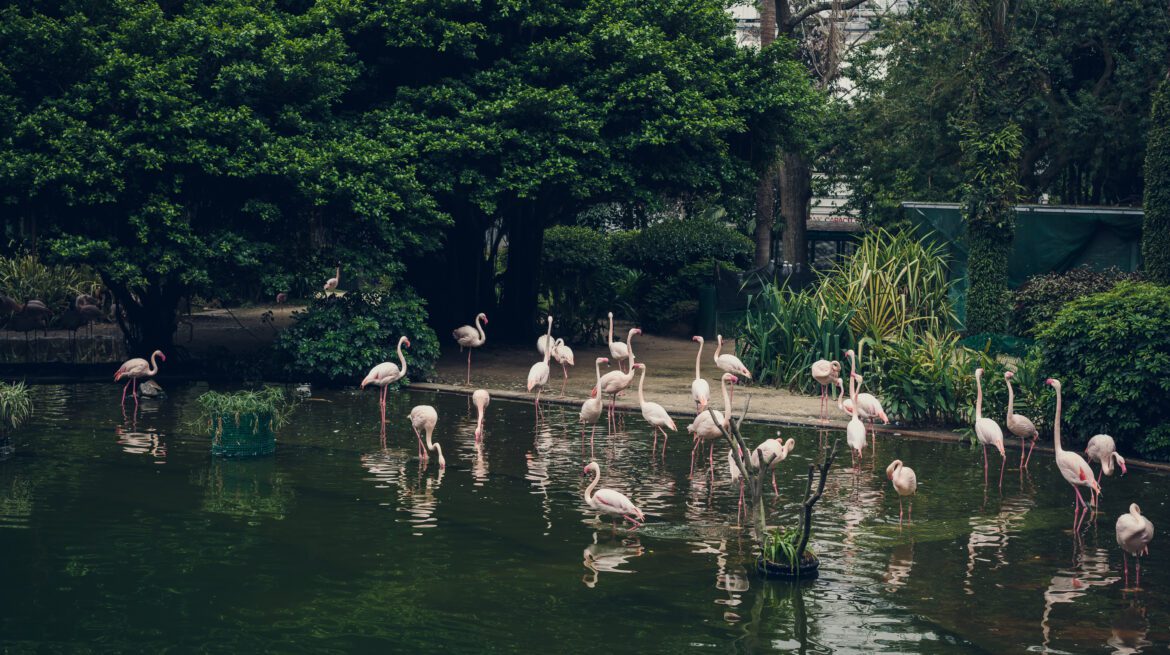Images of towering skyscrapers, bustling streets, and vibrant marketplaces instantly come to mind when one thinks about Hong Kong. Beyond the metropolitan façade, however, lies a hidden treasure trove of spectacular wildlife, just waiting to be explored by brave and nature-loving people. This article will take you on a tour through the heart of Hong Kong’s natural beauty, where varied ecosystems and distinctive species flourish against the backdrop of this dynamic metropolis.
A Biodiversity Hotspot in the Concrete Jungle:
Hong Kong, located on China’s southern coast, is famed for its modernity, but it is also a biodiversity hotspot. The region is home to a diverse diversity of flora and wildlife, with ecosystems comprising forests, marshes, coastal areas, and marine environments.
The Hong Kong Wetland Park is an excellent place to begin for any wildlife enthusiast. This ecotourism treasure provides insight into the delicate balance of wetland ecosystems and the wildlife that inhabit there. As you wander along the boardwalks, keep an eye out for migrating birds like the Black-faced Spoonbill and the endangered Chinese Egret, which both pause here on their epic travels.
Majestic Mountains and Lush Woodlands:
For those seeking a more challenging journey, Hong Kong’s mountainous geography offers numerous opportunities to explore its beautiful woodlands. The Dragon’s Back Trail is a famous hiking trail that provides beautiful views of the town as well as the surrounding vegetation. You may hear the vibrant calls of the Red-billed Blue Magpie and the elusive Horsfield’s Tarsier, a little monkey with huge eyes adapted for nocturnal living, as you rise.
A variety of reptiles, amphibians, and insects live in the lush woodlands. Keep an eye out for the delicate fluttering of butterflies like the Common Bluebottle and the brilliantly patterned Hong Kong Birdwing, which both give vibrant splashes of color to the forest canopy.
A Glimpse Beneath the Waves:
The natural beauty of Hong Kong does not end at its coastlines; its marine habitats are equally appealing. Take your snorkeling or diving gear to the Hoi Ha Wan Marine Park, where crystal-clear waters reveal a fascinating undersea world. Coral reefs are teeming with marine life, including brightly colored species such as the Mandarin species and the Harlequin Sweetlips. Lucky divers may even come across the enigmatic and graceful seahorses that live in these waters.
But the oceanic wonders don’t stop there. Lucky onlookers may catch a glimpse of the distinctive Chinese white dolphin, often known as the “pink dolphin” due to its rosy color, at certain times of the year. These critters are native to the waters near Hong Kong and are extremely rare.
Conservation Efforts and Challenges:
While the natural beauty of Hong Kong is unquestionably alluring, it is not without its troubles. Urbanization, pollution, and habitat loss all pose serious risks to the region’s fauna. Conservation initiatives, however, are ongoing to protect and maintain these priceless ecosystems.
Habitat restoration, animal monitoring, and public education are all priorities for organizations like the Hong Kong Bird Watching Society and WWF Hong Kong. Their programs are intended to raise awareness about the necessity of protecting these areas and the organisms that rely on them.
Conclusion:
The natural beauty of Hong Kong is an amazing monument to the perfect cohabitation of urban life with thriving ecosystems. The region’s remarkable fauna gives a vivid image of the interconnection of all living things, from the marshes to the woodlands and beneath the oceans. As conservation initiatives gain traction, future generations will be able to marvel at the same natural treasures that have enthralled travelers for centuries. So put on your hiking boots, take your binoculars, and set off on an excursion to Hong Kong’s wildlife wonderland – a sanctuary of nature’s greatest creations buried in the center of a bustling metropolis.

